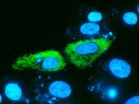(Press-News.org) Having more control in the workplace can have negative consequences for individuals but it depends on the form of job control, according to new research out of the University of Toronto.
Sociologist Scott Schieman measured a range of work conditions using data from a national survey of 6,004 Canadian workers. To measure levels of job pressure, he asked study participants questions such as: "How often do you feel overwhelmed by how much you had to do at work?" "How often do you have to work on too many tasks at the same time?" and "How often do the demands of your job exceed the time you have to do the work?"
He found that roughly one-third of Canadian workers report that they "often" or "very often" feel overwhelmed by work or that the demands of their job exceed the time to do the work. Four out of 10 workers report having to work on too many tasks at the same time "often" or "very often."
"Excessive job demands have detrimental effects," says Schieman. "We know that workers who report higher scores on these indicators of job pressure also tend to experience more problems navigating work and family roles, more symptoms of physical and mental health problems and they tend to be less satisfied with their work."
The study found that having control over one's work schedule and job autonomy are associated with lower levels of job pressure. However, challenging work in which one is required to keep learning new things, engage in creative activities, use skills and abilities and handle a variety of tasks, is associated with higher levels of job pressure as is being in a position of authority where one is supervising or managing others.
Three key indicators of higher socioeconomic status (SES) – education, higher status occupations (executives or professionals) and income – were each independently associated with greater job pressure. "However, those with high SES face greater pressure mostly because of their more challenging work and greater levels of authority," says Schieman.
"These findings speak directly to the idea of the stress of higher status. People talk these days about being 'crazy busy' and not having enough time to do all the things at work that need to get done. But being 'crazy busy' isn't randomly distributed in the population. This study demonstrates an unexpected price for higher SES and more control at work –and that price is excessive pressure in the workplace."
Job-Related Resources and the Pressures of Working Life, is published in the journal Social Science Research.
###
MEDIA CONTACTS:
Scott Schieman
Department of Sociology
University of Toronto
scott.schieman@utoronto.ca
416-830-1441
Twitter: @scottschiemanUT
Kim Luke
Communications
Faculty of Arts & Science
University of Toronto
Twitter: @UTArtSci END
'Crazy-busy' Canadians under pressure on the job
Especially those with higher status, challenging work or in positions of authority
2013-02-28
ELSE PRESS RELEASES FROM THIS DATE:
Discoveries suggest icy cosmic start for amino acids and DNA ingredients
2013-02-28
Using new technology at the telescope and in laboratories, researchers have discovered an important pair of prebiotic molecules in interstellar space. The discoveries indicate that some basic chemicals that are key steps on the way to life may have formed on dusty ice grains floating between the stars.
The scientists used the National Science Foundation's Green Bank Telescope (GBT) in West Virginia to study a giant cloud of gas some 25,000 light-years from Earth, near the center of our Milky Way Galaxy. The chemicals they found in that cloud include a molecule thought ...
Researchers show that lipid nanoparticles are ideal for delivering genes and drugs
2013-02-28
This press release is available in Spanish.
At the Faculty of Pharmacy of the Basque Public University (UPV/EHU) the Pharmacokinetics, Nanotechnology and Gene Therapy research team is using nanotechnology to develop new formulations that can be applied to drugs and gene therapy.Specifically, they are using nanoparticles todesignsystems for delivering genes and drugs; this helps to get the genes and drugs to the point of action so that they can produce the desired effect.
The research team has shown that lipid nanoparticles, which they have been working on for several ...
Creating your own animated 3D characters and scenes for the web
2013-02-28
It could be a grotto. Light is glowing up from below and gives the moving waves a glance of an opal under the sunlight. "This computer graphic was written with our new description language by a schoolboy in not more than two hours after a briefly reading of the instructions", explains Felix Klein, doctoral candidate at the chair of Computer Graphics at Saarland University. As Klein is moving three slide switches with the mouse which are placed under the wave graphic on the display, the water is transforming. Now, the waves are spreading circularly from the center point, ...
Mutation altering stability of surface molecule in acid enables H5N1 infection of mammals
2013-02-28
A single mutation in the H5N1 avian influenza virus that affects the pH at which the hemagglutinin surface protein is activated simultaneously reduces its capacity to infect ducks and enhances its capacity to grow in mice according to research published ahead of print today in the Journal of Virology.
"Knowing the factors and markers that govern the efficient growth of a virus in one host species, tissue, or cell culture versus another is of fundamental importance in viral infectious disease," says Charles J. Russell of St. Jude Children's Research Hospital, Memphis, ...
Cell movement explained by molecular recycling
2013-02-28
VIDEO:
This shows fibroblast cells using integrins to migrate through tissue.
Click here for more information.
Scientists at The University of Manchester have identified the method by which cells control the recycling of molecules, a process that is essential for them to move. The discovery provides researchers with a better understanding of how our bodies heal wounds.
Working under Professor Martin Humphries, the Dean of the Faculty of Life Sciences, Dr Mark Morgan and ...
Trackable drug-filled nanoparticles -- a potential weapon against cancer
2013-02-28
Tiny particles filled with a drug could be a new tool for treating cancer in the future. A new study published by Swedish scientists in Particle & Particle Systems Characterization shows how such nanoparticles can be combined to secure the effective delivery of cancer drugs to tumour cells – and how they can be given properties to make them visible in MR scanners and thus rendered trackable.
The team, which consisted of scientists from Karolinska Institutet (KI) and the Royal Institute of Technology (KTH) in Stockholm, and from Chalmers University of Technology in Gothenburg, ...
Study finds diabetes does not increase risk of total knee surgical complications
2013-02-28
PASADENA, Calif., Feb. 27, 2013 – Patients with diabetes who undergo total knee replacement surgery do not have increased risk of surgical complications compared to those patients without diabetes, according to a Kaiser Permanente study published today in The Journal of Bone and Joint Surgery.
Researchers studied the electronic health records of more than 40,000 patients who had a first-time knee replacement from January 1, 2001 through December 31, 2009. Of the patients studied, 12.5 percent had controlled diabetes, 6.2 percent had uncontrolled diabetes and 81.3 percent ...
About 15 percent of patients with Wolfram syndrome do not meet current diagnostic criteria
2013-02-28
Researchers at IDIBELL and CIBERER Virginia Nunes and Miguel López de Heredia have collected data from 400 patients with Wolfram syndrome published worldwide in the last fifteen years to better understand the natural history of disease. The findings lead them to propose a revision of the diagnostic criteria of the disease because 15% of paediatric patients escape from diagnosis.
The results of this review have been published this week in the online edition of the journal Genetics in Medicine to coincide with the World Day of rare diseases, on February 28th. These rare ...
Wars on editing Wikipedia articles, uncovered
2013-02-28
CSIC researcher Maxi San Miguel, director of the Institute for Cross-Disciplinary Physics and Complex Systems (IFISC), a joint research Institute of CSIC and the University of the Balearic Islands, explains: "We say there is a conflict when there is an unusual high number of editing and corrections in articles related to some topic or personage on which there are very divergent or polarised opinions. Our model identifies the different types of behaviours according to two main parameters: the reposition rate of editors as time goes by; and the level of tolerance, that is, ...
Toxic oceans may have delayed spread of complex life
2013-02-28
A new model suggests that inhospitable hydrodgen-sulphide rich waters could have delayed the spread of complex life forms in ancient oceans. The research, published online this week in the journal Nature Communications, considers the composition of the oceans 550-700 million years ago and shows that oxygen-poor toxic conditions, which may have delayed the establishment of complex life, were controlled by the biological availability of nitrogen.
In contrast to modern oceans, data from ancient rocks indicates that the deep oceans of the early Earth contained little oxygen, ...
LAST 30 PRESS RELEASES:
Jeonbuk National University study shows positive parenting can protect adolescents against self-harm
Surface-engineered ZnO nanocrystals to tackle perfluoroalkyl substance contamination
This new understanding of T cell receptors may improve cancer immunotherapies
A new fossil face sheds light on early migrations of ancient human ancestor
A new immunotherapy approach could work for many types of cancer
A new way to diagnose deadly lung infections and save lives
40 percent of MRI signals do not correspond to actual brain activity
How brain-inspired algorithms could drive down AI energy costs
Gum disease may be linked to plaque buildup in arteries, higher risk of major CVD events
Contrails are a major driver of aviation’s climate impact
Structure of dopamine-releasing neurons relates to the type of circuits they form for smell-processing
Reducing social isolation protects the brain in later life
Keeping the heart healthy increases longevity even after cancer
Young adults commonly mix cannabis with nicotine and tobacco
Comprehensive review illuminates tau protein's dual nature in brain health, disease, and emerging psychiatric connections
Book prepares K-12 leaders for the next public health crisis
Storms in the Southern Ocean mitigates global warming
Seals on the move: Research reveals key data for offshore development and international ecology
Sports injuries sustained during your period might be more severe
World's first successful 2 Tbit/s free-space optical communication using small optical terminals mountable on satellites and HAPS
Can intimate relationships affect your heart? New study says ‘yes’
Scalable and healable gradient textiles for multi‑scenario radiative cooling via bicomponent blow spinning
Research shows informed traders never let a good climate crisis go to waste
Intelligent XGBoost framework enhances asphalt pavement skid resistance assessment
Dual-function biomaterials for postoperative osteosarcoma: Tumor suppression and bone regeneration
New framework reveals where transport emissions concentrate in Singapore
NTP-enhanced lattice oxygen activation in Ce-Co catalysts for low-temperature soot combustion
Synergistic interface engineering in Cu-Zn-Ce catalysts for efficient CO2 hydrogenation to methanol
COVID-19 leaves a lasting mark on the human brain
Scientists use ultrasound to soften and treat cancer tumors without damaging healthy tissue
[Press-News.org] 'Crazy-busy' Canadians under pressure on the jobEspecially those with higher status, challenging work or in positions of authority

